#tipu's tiger
Text

Tipu's Tiger, an 18th century automaton sculpture.
3 notes
·
View notes
Text
Tipu's Tiger
Yu Su, Roll With The Punches (2019)
#Yu Su#Tipu's Tiger#Roll With The Punches#can someone hire her to make a video game soundtrack...#m#Bandcamp
3 notes
·
View notes
Text
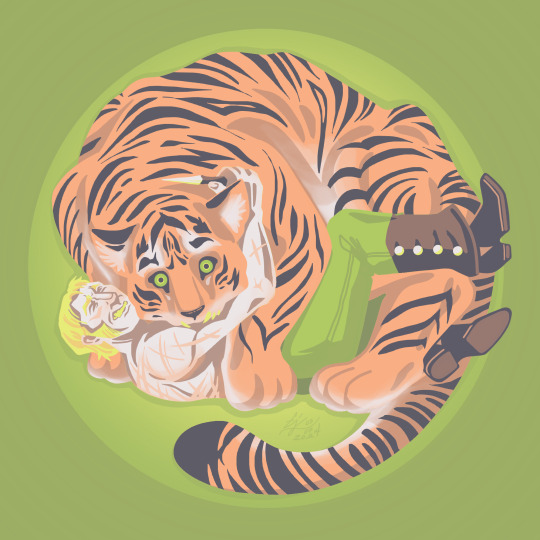
I stretch and strain with all my might
Drift off into the velvety arms of the night
Kick and claw and scratch and bite...
Choked out, choked out, choked out!
[a sharpe, requested by @rubeau]
#em draws stuff#em is posting about sharpe#sharpe#richard sharpe#the wikipedia page for tipu's tiger already has a Whole Section for derivative works but HERE IS ONE MORE.#he's not getting out of this one alive. Not This Time.#look. I think that sharpe should get to be a big scary clawed toothed creature and also that he should be Killed by such a creature#and those opinions can be held at precisely the same time. an artist may contain multitudes.#and the present moment I am angry about a variety of things and I am permitted to make essay style art that is also sharpe art. what of it.#caption lyrics from 'choked out' by the mountain goats which is one of my personal sharpe songs of all time#but for ideal viewing experiences you should listen to about four episodes of the silt verses whilst drawing all those stripes...
40 notes
·
View notes
Text
GABBLER RECOMMENDS: "Tania James on Trust, Truth, and the Desire to Create Something That Lasts"
From the podcast:
Tania James: Yeah, I don’t think he actually commissioned the elephant clock. I kind of created this moment. But I think he would’ve really responded to that object that was created and designed by a 12th-century Muslim polymath. His name was Al-Jazari and he is well known in the Arab world. I don’t know. But when I discovered this thing, this was a whole other world of…
youtube
View On WordPress
#Automata#Automaton#Automatons#colonization#Lithub#Loot#Novel#Podcast#Tania James#The Maris Review#Tippoo&039;s#Tipu Sultan#Tipu&039;s Tiger#Youtube
2 notes
·
View notes
Text
ಕರ್ನಾಟಕ ಶಾಲಾ ಪಠ್ಯದಲ್ಲಿ ಟಿಪ್ಪು ವೈಭವೀಕರಣಕ್ಕೆ ಸಂಪೂರ್ಣ ಬ್ರೇಕ್! ಎರಡೇ ಸಾಲಿನಲ್ಲಿ ಪಾಠ ಮುಕ್ತಾಯ
ಕರ್ನಾಟಕ ಶಾಲಾ ಪಠ್ಯದಲ್ಲಿ ಟಿಪ್ಪು ವೈಭವೀಕರಣಕ್ಕೆ ಸಂಪೂರ್ಣ ಬ್ರೇಕ್! ಎರಡೇ ಸಾಲಿನಲ್ಲಿ ಪಾಠ ಮುಕ್ತಾಯ
ಬೆಂಗಳೂರು: ರಾಜ್ಯದಲ್ಲಿ ವಿವಾದಕ್ಕೆ ಕಾರಣವಾಗಿದ್ದ ಟಿಪ್ಪು (Tipu) ಪಠ್ಯ ಗೊಂದಲಕ್ಕೆ ಪಠ್ಯ ಪುಸ್ತಕ ಸಮಿತಿ (Karnataka School Syllabus Revision Committee) ತೆರೆ ಎಳೆದಿದೆ. ಶಾಲಾ ಪುಸ್ತಕದಲ್ಲಿ ಟಿಪ್ಪು ವೈಭವೀಕರಣಕ್ಕೆ ಸಂಪೂರ್ಣ ಬ್ರೇಕ್ ಬಿದ್ದಿದ್ದು, ಎರಡೇ ಎರಡು ಸಾಲಿನಲ್ಲಿ ಟಿಪ್ಪು ಕುರಿತ ಪಾಠ ಮುಕ್ತಾಯವಾಗುತ್ತದೆ. ಮೈಸೂರು ಹುಲಿ ಟಿಪ್ಪು ಸುಲ್ತಾನ್ ಎಂಬ ಬಿರುದು ಕೂಡಾ ಕಡಿತ ಮಾಡಲಾಗಿದೆ. ಪಠ್ಯದಲ್ಲಿ ಎಲ್ಲಿಯೂ ಮೈಸೂರು ಹುಲಿ ಟಿಪ್ಪು ಎಂಬ ಬಿರುದು ಬಳಸಿಲ್ಲ. ಈ ಹಿಂದೆ 6ನೇ…
View On WordPress
#BC Nagesh#Education Ministry#kannada news#karnataka latest news#Mysore Tiger#school syllabus#Tipu sultan
0 notes
Text
Scientific knowledge and technology played a significant role in the expansion of colonial rule in India and the consequent incorporation of the Indian sub-continent into the [commercialized, imperial] world-system [...]. The colonization of nature, territory and people in British India led to a mutually constitutive interplay [...].
By the time the East India Company managed to establish a foothold in Bengal in 1757, [...] [a]fter the acquisition of the formal rights to collect revenues in the states of Bengal, Bihar and Orissa, the issue of obtaining accurate information about the extent of the produce, the population and other social statistics assumed significance. The detailed scientific surveys [...] were possible due to the large number of amateur scientists employed by the Company. Over time, these surveys played a major role in the transformation of a trading company into a colonial state [...] and the incorporation of India into the modern world-system. [...]
---
Considered the founder of British geography, James Rennell arrived in India in 1760 barely three years after the decisive battle of Plassey. Rennell’s cartographic skills caught the attention of the governor of Bengal presidency, who was ‘anxious to inaugurate some system for correcting and revising the geography of Bengal’ [...]. Rennell’s mapping out in great detail the area under the Company was indispensable for the rationalization of the extraction of surplus, administrative strategies and techniques of control. [...] In 1777 he left for England, and two years later he published the Bengal Atlas that led to his election to the Royal Society. [...] With reference to the ‘science wars’, [...] Rennell’s work was also incorporated in the key text[s] of the time, C. Lyell’s Principles of Geology (1830) [...] [and] the work of [...] Humboldt and Carl Ritter. Rennell’s surveys contributed to the organized [...] surveys [across wider regions of India] that followed after the defeat of Tipu Sultan of Mysore in 1799. [...] [Mysore's] sustained resistance to British power had a major impact on the general consciousness in Britain. [...]
Thomas de Quincey extolled the virtues of the ‘British bulldog’ against [...] the tyrannical ‘Bengal tiger’ [...]. The scientific knowledge that emerged as a consequence of the surveys of Mysore contributed [...] to the consolidation of administrative power [...]. The key figures associated with the surveys [included] Colin Mackenzie [...]. Mackenzie’s ethnographic notes contributed to imperial perceptions of the [...] [people of South Asia] and the grid of anthropological knowledge through which administrative power was deployed. [...]
---
Nature, culture and colonial power were inextricably implicated in the production of scientific knowledge and of colonial society. [...] The establishment the Public Works Department in 1854 provided fresh impetus for the deployment of science and technology in grappling with problems precipitated by colonial rule. Declining revenues for the Company focused attention on gigantic irrigation and other public works projects. [...]
The irrigation projects were expanded to include the railways (1849), the telegraph (1852), and the postal system (1850). Together, they represented the largest state-sponsored enterprise undertaken anywhere at that time. Lord Dalhousie, under whose tenure these projects were inaugurated, declared the railways, the telegraph and the postal system as the ‘three great engines of social improvement’.
His predecessor William Bentinck had already termed the railways ‘the great engine of moral improvement’ in a country ‘cursed from one end to the other by the vice, the ignorance, [...] the barbarous and cruel customs that have been the growth of ages under every description of Asian misrule’ [...]. Later observers were to wax ever more eloquent on the role of the railways in the modernization of India. For W. A. Rogers of the Indian Civil Service, railways ‘are opening the eyes of the people … they teach them that speed attained is time, and therefore money, saved or made’ (Adas1989: 226). The importance of a network of railways, connecting the cotton plantations of the Deccan region to the ports became significant especially during the 'cotton famine' of 1846 [...].
---
Almost immediately after Dalhousie left India, secure in the belief that the double engines of moral improvement and legitimacy were at work, the rebellion of 1857 put an end to such expectations. The rebellion was partly triggered in response to the wide-ranging transformations [...] triggered off by the introduction of [these] new [colonial infrastructures] [...].
In the end, the rebellion was violently suppressed by the very technologies that had precipitated it in the first place. [...]
---
All text above by: Zaheer Baber. "Colonizing nature: scientific knowledge, colonial power and the incorporation of India into the modern world-system". British Journal of Sociology 52(1), pages 37-58. April 2001. [Bold emphasis and some paragraph breaks/contractions added by me. Presented here for commentary, teaching, criticism purposes.]
37 notes
·
View notes
Text
Oh, the irony of the followers of a fascist ideology, whose founder was a bootlicker for the British, insulting someone who actually died fighting the British. What a fucking joke this country has become

Remember Tipu Sultan, the Tiger of Mysore
#tipu sultan#india#original post#not incorrect quotes#desiblr#desi tumblr#desi tag#desi stuff#desi#islamophobia#british colonialism#colonialism
35 notes
·
View notes
Photo
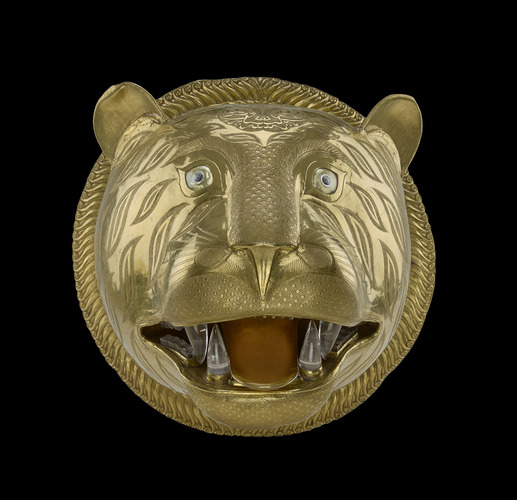
Tiger's head, from Tipu Sultan's throne room, 1785-93, India.
139 notes
·
View notes
Text
Just learned about Tipu's Tigers (also referred to as Death of Munrow) - a genre of art where colonizers are violently attacked by tigers
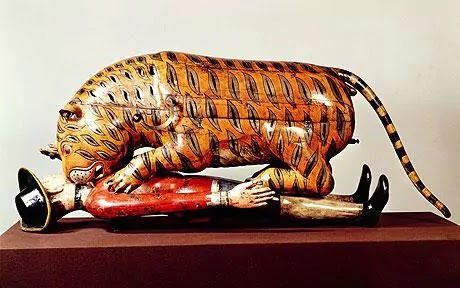

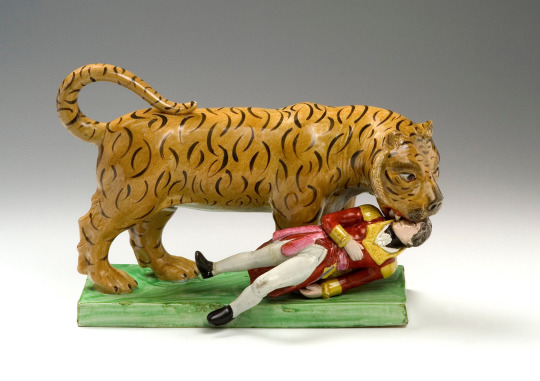
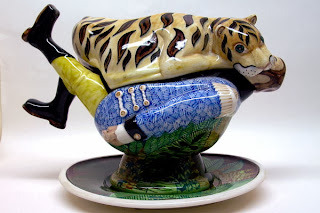
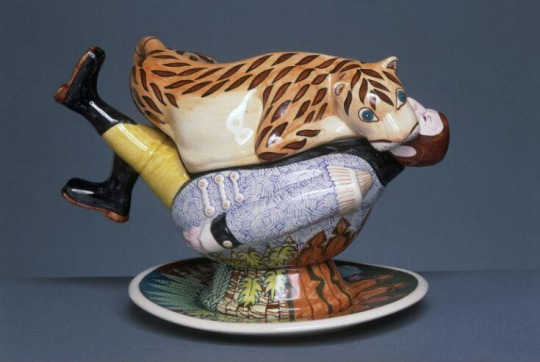
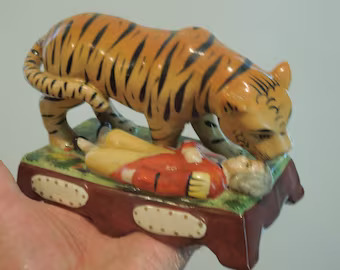
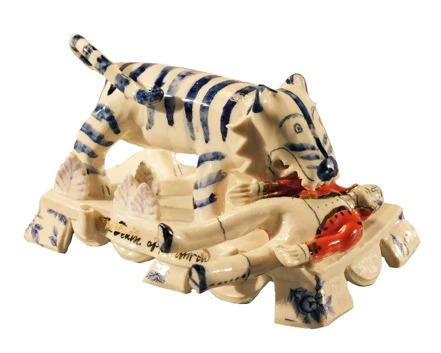
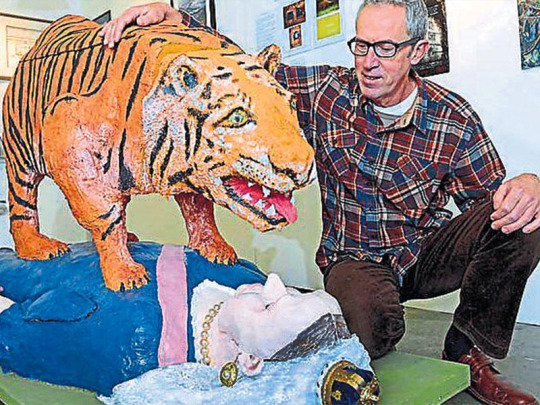
60 notes
·
View notes
Photo
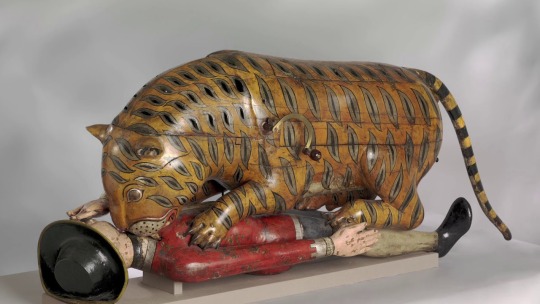
Tippoo's Tiger
'Tippoo's Tiger' was made for Tipu Sultan, ruler of Mysore in South India from 1782 to 1799. The tiger, an almost life-sized wooden semi-automaton, mauls a European soldier lying on his back. Concealed inside the tiger's body, behind a hinged flap, is an organ which can be operated by turning the handle next to it. This simultaneously makes the man's arm lift up and down and produces noises intended to imitate his dying moans.
Tigers and tiger stripes were part of the decoration of Tipu Sultan's possessions and anything made to proclaim his rule or personal association. Jewelled gold tiger head finials were on his throne, and tiger stripes were stamped onto his coinage, and his swords and guns incorporated tiger heads and stripes in their forms and ornamentation. Small bronze mortars made for his army were in the shape of crouching tigers, and the men who fired lethal iron-cased rockets against the British wore tunics with stripes woven into the fabric.
Tipu Sultan strongly resisted the attacks by British East India Company army on his kingdom. The Company had been established to trade, but by the late 18th century was extending British rule in India. It fought three wars against Mysore before making the final assault on Tipu's capital, Seringapatam, in 1799.
34 notes
·
View notes
Text
youtube
New song added. It's a waste of time to spend too much time on one song, so I'll wrap it up here.
***
Tiger. I'm sure there are many interpretations, but what I had in mind when making it was "Tipu's tiger", and the Celtic Tiger.
This song was born after rereading James Joyce's "Dubliners" for the first time in several years and scratching my head because I still couldn't understand it.
Reading while referring to the notes at the end of the book is a bit tedious. So inevitably end up reading at a slow pace, and I don't understand the local situation at the time, I can't really get into the content.
lyrics:
Sorrow intertwined with wrath,
A bitter wind, storm;
In vengeance I'll rejoice —
The tiger now awakened.
Beneath the velvet carpet:
Where demands crawl.
A tiger slumbers beneath,
The moon's curious call.
A silent rage within,
Now stirring deep;
Detonating flames of fury,
With promises to keep.
Light up the ivy leaves,
Set the world ablaze.
Nightmares turned to waking,
Fuelling endless haze,
By the light of molotov,
Rebellion sets the stage.
The beast shall rise,
And dominion shall be claimed.
An anguished roar,
Born of years' lament,
The pain now transforming,
Fierce anger ferment.
Etched in startling red;
Visions of blood soaked.
Echoes of smashed reveries,
That waged wars within my head.
For if that's how it all ends —
In vengeance I'll rejoice.
The tiger now awakened,
Fuelled by anguished voices.
Burn down the blue star —
Let chaos be the guide.
3 notes
·
View notes
Photo
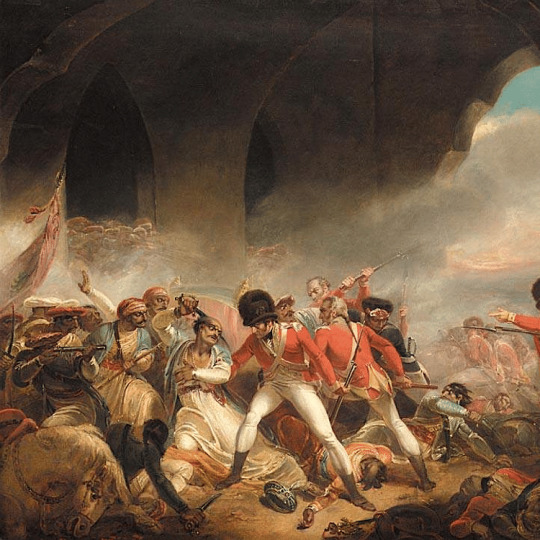
Anglo-Mysore Wars
The Four Anglo-Mysore Wars (1767-1799) were fought between the British East India Company (EIC) and the state of Mysore. Haidar Ali and his son Tipu Sultan, the "Tiger of Mysore", were relentless foes to British expansion in southern India but were eventually subdued by the triple alliance of the EIC, the Maratha Confederacy, and the Nizam of Hyderabad.
The four Anglo-Mysore wars were spread over four decades of battles, sieges, and ruthless psychological warfare:
Continue reading...
34 notes
·
View notes
Photo
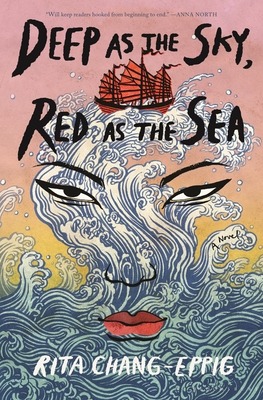


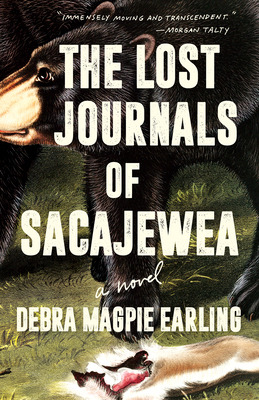
New Title Tuesday: Historical Fiction
Deep as the Sky, Red as the Sea by Rita Chang-Eppig
When Shek Yeung sees a Portuguese sailor slay her husband, a feared pirate, she knows she must act swiftly or die. Instead of mourning, Shek Yeung launches a new plan: immediately marrying her husband’s second-in-command, and agreeing to bear him a son and heir, in order to retain power over her half of the fleet.
But as Shek Yeung vies for control over the army she knows she was born to lead, larger threats loom. The Chinese Emperor has charged a brutal, crafty nobleman with ridding the South China Seas of pirates, and the Europeans—tired of losing ships, men, and money to Shek Yeung’s alliance—have new plans for the area. Even worse, Shek Yeung’s cutthroat retributions create problems all their own. As Shek Yeung navigates new motherhood and the crises of leadership, she must decide how long she is willing to fight, and at what price, or risk losing her fleet, her new family, and even her life.
A book of salt and grit, blood and sweat, Deep as the Sky, Red as the Sea is an unmissable portrait of a woman who leads with the courage and ruthlessness of our darkest and most beloved heroes.
The Long March Home by Marcus Brotherton and Tosca Lee
Jimmy Propfield joined the army for two reasons: to get out of Mobile, Alabama, with his best friends Hank and Billy and to forget his high school sweetheart, Claire.
Life in the Philippines seems like paradise--until the morning of December 8, 1941, when news comes from Manila: Imperial Japan has bombed Pearl Harbor. Within hours, the teenage friends are plunged into war as enemy warplanes attack Luzon, beginning a battle for control of the Pacific Theater that will culminate with a last stand on the Bataan Peninsula and end with the largest surrender of American troops in history.
What follows will become known as one of the worst atrocities in modern warfare: the Bataan Death March. With no hope of rescue, the three friends vow to make it back home together. But the ordeal is only the beginning of their nearly four-year fight to survive.
Inspired by true stories, The Long March Home is a gripping coming-of-age tale of friendship, sacrifice, and the power of unrelenting hope.
Loot by Tania James
Abbas is just seventeen years old when his gifts as a woodcarver come to the attention of Tipu Sultan, and he is drawn into service at the palace in order to build a giant tiger automaton for Tipu’s sons, a gift to commemorate their return from British captivity. His fate—and the fate of the wooden tiger he helps create—will mirror the vicissitudes of nations and dynasties ravaged by war across India and Europe.
Working alongside the legendary French clockmaker Lucien du Leze, Abbas hones his craft, learns French, and meets Jehanne, the daughter of a French expatriate. When Du Leze is finally permitted to return home to Rouen, he invites Abbas to come along as his apprentice. But by the time Abbas travels to Europe, Tipu’s palace has been looted by British forces, and the tiger automaton has disappeared. To prove himself, Abbas must retrieve the tiger from an estate in the English countryside, where it is displayed in a collection of plundered art.
The Lost Journals of Sacajewea by Debra Magpie Earling
Among the most memorialized women in American history, Sacajewea served as interpreter and guide for Lewis and Clark's Corps of Discovery. In this visionary novel, acclaimed Indigenous author Debra Magpie Earling brings this mythologized figure vividly to life, casting unsparing light on the men who brutalized her and re-centering Sacajewea as the arbiter of her own history.
Raised among the Lemhi Shoshone, in this telling the young Sacajewea is bright and bold, growing strong from the hard work of "learning all ways to survive" gathering berries, water, roots, and wood; butchering buffalo, antelope, and deer; catching salmon and snaring rabbits; weaving baskets and listening to the stories of her elders. When her village is raided and her beloved Appe and Bia are killed, Sacajewea is kidnapped and then gambled away to Charbonneau, a French Canadian trapper.
Heavy with grief, Sacajewea learns how to survive at the edge of a strange new world teeming with fur trappers and traders. When Lewis and Clark's expedition party arrives, Sacajewea knows she must cross a vast and brutal terrain with her newborn son, the white man who owns her, and a company of men who wish to conquer and commodify the world she loves.
Written in lyrical, dreamlike prose, The Lost Journals of Sacajewea is an astonishing work of art and a powerful tale of perseverance--the Indigenous woman's story that hasn't been told.
#historical fiction#fiction#new library books#New Books#new books to read#Book Recommendations#book recs#Reading Recs#reading recommendations#TBR pile#tbr#tbrpile#to read#Want To Read#Booklr#book tumblr#book blog#library blog
11 notes
·
View notes
Text
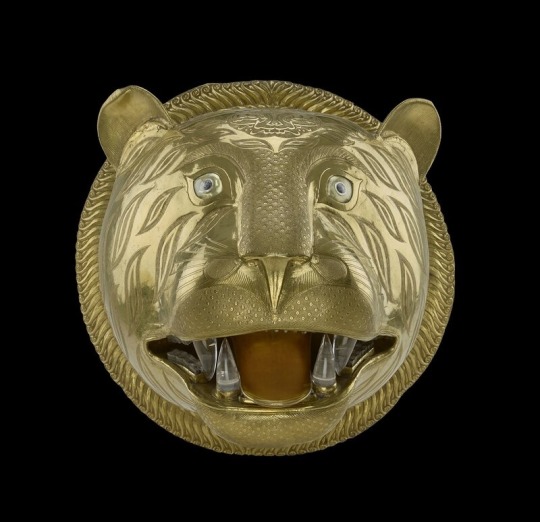
Indian, Tiger's head, 1785-93,
Gold and rock crystal from the throne of Tipu Sultan (1785–93), ruler of Mysore in India.
Courtesy Alain Truong
43 notes
·
View notes
Text

Book review - Loot by Tania James
This one turned out to be a lot more boring than it seemed. It is a about a young, talented woodworker named Abbas from Srirangapatna, Mysore, whose work catches the eye of Tipu Sultan. Tipu Sultan enlists Abbas to work for him, under the apprenticeship of a French clockmaker named Lucien Du Leze. Together, they build a one-of-a-kind musical automaton of a tiger killing a British soldier, which is later stolen as a war prize when the British attack Mysore and kill Tipu Sultan. Abbas later moves to France, where he learns that the tiger has been given to the wife of one of the British soldiers. He goes to England with Jehanne, a girl he knew from his childhood that also went to France, to try and get the tiger back.
..............................................................................................................................
I thought this book had a very interesting concept, but there are huge gaps in time left unexplained, random deaths that didn't make much sense, and an anticlimactic ending (its described as a heist novel but Abbas and Jehanne ultimately don't get the Tiger back, and for all his prodigious talent Abbas becomes a dollmaker). It did have a wry sense of humor that I enjoyed, though.
5 notes
·
View notes
Note
NO I TOTALLY AGREE it was soooo. sterilised. considering they had gay sex (im the anon that asked btw)
like the book is not perfect but there is a LOT its missing in the adaptation. they really just completely nerfed most of the female characters. they entirely erased alex' sister june (who had a big part of both the plot and impact on his character). bea had so much depth that they judt completely took away. Who is this woman in sundresses and kitten heels thats literally not the bea from the book in any way!!!! and nora too is so much more. Rounded. in the book
and they took away rafael luna (first gay hispanic senator in the book) and kindof gave most of his role in the first act to miguel. and the choice to make MIGUEL the person that (is implied to have) leaked the emails is. hoenstly it left a horrible taste in my mouth. the jealous gay hispanic guy outed him? really? when in the book it was the republican who was running against his mother? you gave that role to MIGUEL INSTEAD? it really. really pissed me off like its a very very different story to the book while still being the same premise
and the book is a lot more explicitly anti monarchy too. i mean it isnt really. its bery bare bones what if the prince was sad bc the monarchy was bad :( but it IS 10x what the movie gave us. in the book they visited tipu's tiger in the v&a which is a tiger eating a european soldierband henry talks about how his mum used to say that the tuger was angry bc her great great great great grandfather stole the statue and she thinks they shld give it back but gran says they couldnt (the book has a queen instead ofna king). and like. when i read it i was like yeah this is bare minimum anti monarchy at the end if the day it was nothing revolutionary. but. the film. man. it gave NOTHING.
man i am so sorry i didnt mean to write so much it got away from me. but. yeah. very dissappointing movie
i’m glad you can shed a bit more light on the discrepancies and issues book to film because i haven’t read the book so obviously i’m a bit ill-informed in that respect! it sounds like the book (as usual with adaptations sadly) had a lot more depth and was a lot more fleshed out, i definitely would’ve liked to see more depth in many of the female characters!
i’m now so mad that they cut what seems like a very important character (rafael luna) for the ‘i don’t like this person so i’ll out them’ trope :(
also, as a brit who is incredibly anti-monarchy (which i do understand may bias me a bit) i feel like they verrry much played it safe in the representation of the british monarchy in the film and it sounds like the author went in a bit more on it in the book?? i really despise the monarchy for many reasons so i think most depictions of the monarchy will fall short for me though to be honest.
all in all, sounds like the book is much better so maybe i just went wrong in terms of watching the movie before reading the book (a fatal mistake 😖)
p.s. i love getting an in-depth ask to my inbox, please don’t apologise for your passion and feelings about something! x
6 notes
·
View notes